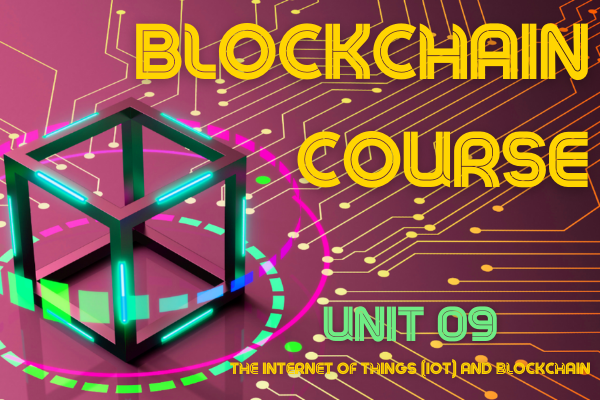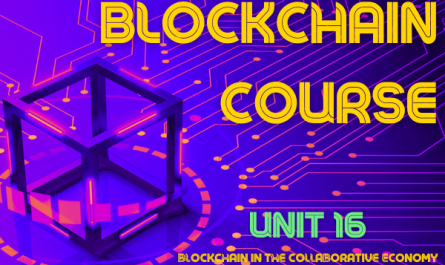Table of Contents
The Internet of Things (IoT) is a term recently coined to refer to the growing number of devices, which are not traditional computing devices, but are connected to the Internet with the sole function of sending the data they collect and receiving instructions, either by the owner of the device or by the manufacturer itself.
In recent years not only the number of devices has increased, but also the types. Today, there is an incredibly wide range of things that can be added to this nomenclature, such as Internet-connected “smart” versions of traditional household appliances like refrigerators and light bulbs, gadgets whose existence is only possible because we live in a society where the Internet has become ubiquitous, such as Alexa-style digital assistants, or different types of sensors that are radically changing all kinds of industrial and service sectors.
What is the Internet of Things IoT?
IoT brings the power of the Internet, data processing and analytics to the real world of physical objects. For consumers, this means interacting with the global information network without the intermediary of a keyboard and a screen. Most everyday objects and devices can come to take instructions from that network with minimal human intervention.
In the enterprise setting, IoT can bring the same efficiency to physical manufacturing and distribution that the Internet has long provided for knowledge. Millions, if not billions, of embedded Internet-enabled sensors around the world provide an incredibly rich set of information that companies can use to gather data on their security of their operations, track assets, and reduce manual processes. Researchers can also use the IoT to collect data on people’s preferences and behavior, although that can have serious privacy and security implications.
The data collection website Priceonomics gave a series of numbers that show just how huge this sector is: “There are more than 50 billion IoT devices as of 2020, and those devices will generate 4.4 zettabytes of data this year. (A zettabyte is one trillion gigabytes.) By comparison, in 2013 IoT devices generated just 100 billion gigabytes. The wealth generated by the IoT market is equally staggering, with estimates of the market’s value in 2025 ranging from $1.6 trillion to $14.4 trillion.”
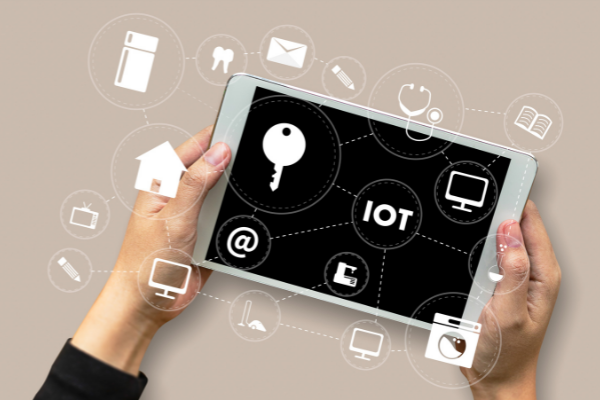
History of IoT
In the beginning, everything connected to the Internet needed a processor and a means to communicate with other things, preferably wirelessly, and those factors imposed a set of costs and power requirements that made widespread IoT deployments impractical, at least until Moore’s Law was achieved in the mid-2000s as far as transistor size reduction was concerned.
A major milestone was the widespread adoption of RFID tags, inexpensive minimalist transponders that could be installed in any object to connect it to the larger Internet world.
With the advent of 4g and the massive presence of Wi-Fi device designers and programmers simply assumed that wireless connectivity would be present everywhere.
Eventually, the implementation of IPv6 meant that connecting billions of gadgets to the Internet would not exhaust the number of available IP addresses, which was beginning to be a very real problem known to few.
How does the IoT work?
The basic elements of the IoT are devices that collect data. Broadly speaking, they are devices connected to the Internet, so each has an IP address. They range from autonomous vehicles that transport products around a factory to simple sensors that monitor the temperature in buildings. They also include personal devices such as smart watches that monitor the number of steps we take per day or how we have slept. For such data to be useful, it needs to be collected, processed, filtered and analyzed, each of which can be handled in different ways.
The data is collected by transmitting it from the devices to a collection point, which are usually servers of the company that owns the device or program, or, on the other hand, it is collected in a cloud. They can be transmitted both wirelessly and over wired networks.
As we say, data processing can take place in data centers or in the cloud, but sometimes it is not an option. In the case of critical devices such as, for example, power outages in industrial environments, the delay in sending data from the device to a remote data center is too great. The round-trip time to send data, process it, analyze it, and return instructions (close that valve before the pipes burst) may take too long. In such cases, perimeter computing can come into play, where a smart device can aggregate data, analyze it and create responses, if necessary. All within a relatively close physical distance, thus reducing delay. These perimeter devices also allow them to be connected so that they can send data to be processed and stored.
Examples of IoT devices
Essentially, anything that is capable of collecting information about the physical world and sending it back home can participate in the IoT ecosystem. Smart home appliances, RFID tags and industrial sensors are a few examples. These sensors can monitor a range of factors including temperature and pressure in industrial systems, the status of critical parts in machinery, patient vital signs, and water and electricity usage, among many other possibilities.
Factory robots can be considered IoT devices, as can autonomous vehicles that move products around industrial environments and warehouses.
Other examples include fitness wearables and home security systems. There are also more generic devices, such as Raspberry Pi or Arduino, that allow you to create your own IoT endpoints.
IoT Device management
To work together, all of these devices need to be authenticated, provisioned, configured, and monitored, as well as patched and updated as needed. Too often, all of this happens in the context of a single vendor’s proprietary systems, or never happens at all, which is even more dangerous. But the industry is starting to move to a standards-based device management model, which allows IoT devices to interoperate and will ensure that devices are not orphaned.
A clear example of the latter is where the motor industry is heading, where all brands are racing to be the first to achieve true autonomous driving, where the passenger does not have to interact with the vehicle.
To achieve this, it is necessary, among other things, that the vehicles are able to communicate with each other, warning of any accident, road section cut or even if the road is in bad condition for any reason. In this way, a safer and much more efficient circulation would be achieved, since the vehicles themselves would be able to act in advance of what is happening in the sections through which they plan to pass thanks to the interconnection between all of them.
When IoT gadgets communicate with other devices, they can use a wide variety of communications standards and protocols, many tailored to devices with limited processing capabilities or not much electrical power. Some of these devices use Wi-Fi or Bluetooth, for example, but many others are specialized for the IoT world. ZigBee, for example, is a wireless protocol for low-power, short-distance communication, while MQTT (Message Queing Telemetry Transport) is a protocol for devices connected over unreliable or delay-prone networks.
The increased speeds and bandwidth of the upcoming 5G standard for mobile networks will also benefit IoT, although such usage will lag behind ordinary cell phones.
For many IoT systems, there is a lot of data coming at them quickly and constantly, which has given rise to a new category of technology, edge computing, which consists of devices placed relatively close to IoT devices in a radius where they reach the data streams sent by the devices themselves. These machines process that data and send only relevant material to a more centralized system for analysis.
For example, imagine a network of dozens of IoT security cameras. Instead of bombarding the building’s security operations center (SoC) with simultaneous live streams, perimeter computing systems could analyze the incoming video and only alert the SoC when one of the cameras detects motion.
This data could go to a centralized data center, but most of the time it ends up in the cloud. The elastic nature of cloud computing is ideal for IoT scenarios where data can come in intermittently or asynchronously. In fact, cloud service giants such as Google, Microsoft and Amazon have IoT offerings in their portfolio.
These giants are trying to sell more than just a place to store the data that a series of sensors have collected. They offer complete IoT platforms, which bring together much of the functionality to coordinate the elements that make up IoT systems. In essence, an IoT platform serves as an intermediary that connects IoT devices and perimeter gateways to the applications that are used to process IoT data.
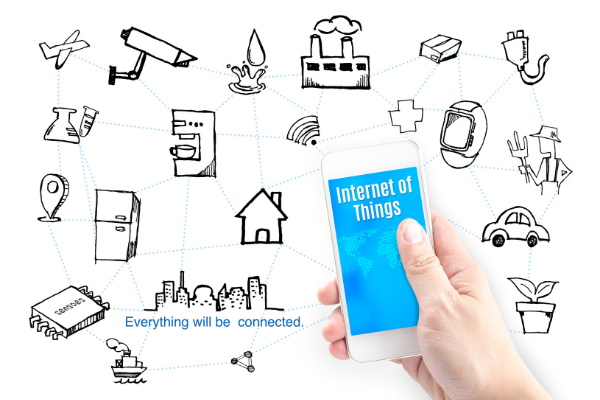
IoT and data
As we have already discussed, there are zettabytes of data being collected between all these IoT devices, funneled through perimeter gateways, and sent to a platform for processing. In many cases, this data is the reason IoT was implemented in the first place. By collecting sensor information in the real world, organizations can make agile decisions in real time.
Oracle, for example, posits a scenario in which people at a theme park are encouraged to download an app that provides information about the park. At the same time, the app sends GPS pings back to park management to help predict wait times in lines. With that information, the park can take action in the short term (adding more staff to increase capacity on some rides, for example) and in the long term (learning which rides are the most and least popular in the park).
These decisions can be made without human intervention. For example, data collected from pressure sensors in a chemical factory pipeline could be analyzed by software in an edge device that detects the threat of a pipeline rupture, and that information can trigger a signal to close valves to prevent a leak.
IoT and big data analytics
Many big data operations use information extracted from IoT devices, correlated with other data points, to gain insights into human behavior.
A dramatic example was when X-Mode published a map based on tracking the location data of people who spent their spring break in Ft. Lauderdale (Florida, USA) in March 2020, even as the coronavirus pandemic was gaining speed in the United States.
The publication of the map showing where all those people had ended up was shocking, not only because it showed the potential spread of the virus, but also because it illustrated the extent to which IoT devices can track us.
IoT and AI data
The volume of data that IoT devices can collect is far greater than any human being can do, and it wouldn’t even do it in real time. We have already seen that edge computing devices are needed just to make sense of the raw data coming from IoT connection points, however, there is also the need to deal with and detect among all that huge amount of information which ones are erroneous.
Many IoT vendors offer machine learning and artificial intelligence capabilities to try to make sense of all the data collected. One example is IBM’s Watson platform, which can be trained by feeding it IoT data sets to produce useful results in the field of predictive maintenance, analyzing drone data to distinguish between trivial damage to a bridge and cracks that show imminent danger and need quick attention, for example.
IoT and business
Business uses for IoT include keeping track of customers, inventory, and the status of important components. IoT for All marks four industries that have been transformed by IoT:
– Oil and gas: Isolated drilling sites can be better monitored with IoT sensors than by human intervention.
– Agriculture: Data extracted from IoT sensors installed on crops can be used to increase field yields.
– HVAC (heating, ventilation and air conditioning): HVAC systems can be managed remotely and much more efficiently.
– Physical stores: customers can be informed about particular offers on their phones depending on which area of the store they are in or whether they have visited one area more than another.
More broadly, companies are looking for IoT solutions that can help them in four areas: energy usage, asset tracking, security, and customer experience.
The IIoT is a specific subset of the Internet of Things comprised of connected sensors and instrumentation for machinery in the transportation, energy and industrial sectors. The IIoT includes some of the most established sectors of the IoT market, including descendants of some devices that predate the IoT moniker. IIoT devices are typically longer-lived than most IoT connection points (some remain in service for a decade or more) and, as a result, may use legacy and proprietary protocols and standards that make it difficult to move to modern platforms
Consumer IoT
The move of IoT devices into consumer spaces is more recent, but much more visible to everyday people. Connected devices range from wearable devices that track our movements to Internet-enabled thermometers. Probably the most prominent IoT product category is home assistants, such as Amazon Alexa or Google Home.
IoT and smart cities
Smart cities promise to transform the way we citizens interact with the urban environment. Smart city technology is still embryonic, but in theory it will help manage traffic, public transportation, utilities, security and more. However, because the information that would be recorded would be highly sensitive, security improvements become a pressing need before widespread adoption is possible.
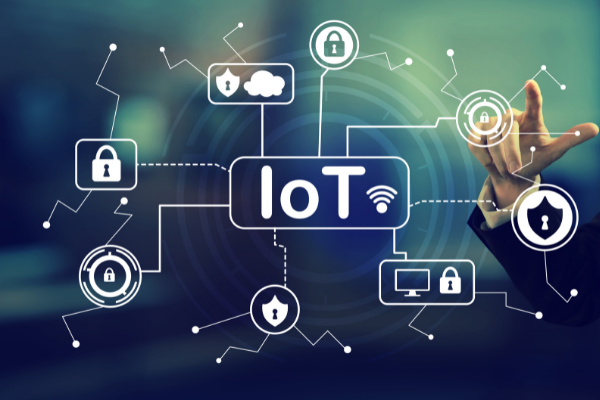
Security and vulnerabilities
IoT devices have earned a bad reputation when it comes to security. PCs and smartphones are “general purpose” computers designed to last for years, with complex, easy-to-use operating systems that now have automated patching and security features built in.
IoT devices, by contrast, are mostly basic gadgets with simple operating systems. They are designed for single tasks and minimal human interaction, and many cannot be patched, monitored or updated. Because many IoT devices are ultimately running a version of Linux under the hood with multiple network ports available, they become tempting targets for hackers.
The biggest example of this was the Mirai botnet that infected around 380,000 devices in 164 countries in 2016 by exploiting the fact that many of them were still using the factory default username and password and ended up launching one of the largest DDoS attacks in history.
It is precisely at this point of vulnerabilities where the Blockchain enters the scene to create a link with IoT that will solve most of the problems we mentioned a moment ago.
The combination of IoT and Blockchain offers several potential benefits and allows a smart device to operate autonomously without requiring the presence of a centralized authority. It can also keep track of how devices communicate with each other.
While the decentralized nature of blockchain is an architectural benefit, it can also become a potential problem for IoT. IoT platforms rely on client-server architecture, which is a centralized authority. Creating an IoT platform that is decentralized in nature will help ensure compatibility with a Blockchain network, but it can become quite complex to configure IoT sensors to handle their own data storage and operations, as they rely on the operational and storage resources of a central unit.
Blockchain has been implemented with IoT across industries, including banking, financial services, automotive, and agriculture. It has also been used with IoT in smart homes, supply chains, logistics and in the well-known smart contracts. The latter apply Blockchain to IoT ecosystems to automatically execute a contract once certain conditions are met. This is what allows a smart device to operate on its own without the need for a centralized authority.
This application of Blockchain technology allows companies to manage data on perimeter devices in an IoT system, reducing the costs associated with maintaining and transferring data from IoT devices. It reduces the risks of managing data, because there is no centralized repository where it all accumulates and the ledger is not vulnerable to cyber-attacks. It eliminates the IoT gateway or any other intermediate device for data exchange and reduces the time needed to process the data.
Blockchain gives the IoT system a high level of security that it did not have until now through the familiar features of data encryption and decentralized data distribution. As a result, the failure of one device, server or network will not affect the entire IoT ecosystem, as might happen in the traditional model. In many cases, the resiliency of a Blockchain network would do error control, where the network can continue to function if nodes go offline.
The Mirai botnet already exposed the vulnerabilities of connected devices to DDoS attacks due to the weak access controls and client-server structure of IoT networks. But these can be protected against such botnet-based DDoS attacks with the distributed security architecture of a blockchain as, in this architecture, each device in a network is independently protected with a peer-to-peer blockchain network.
IoT-Blockchain technology is now in its early stages, and some of the leading technology companies have started to look for opportunities in this space. For example, IBM Blockchain Platform enables companies to extend blockchain to cognitive IoT, a set of technologies that combines IoT and cognitive computing.
IoT-Blockchain technology is slowly starting to become mainstream, although some operational and technical issues remain to be solved. We already know that scalability and storage are major issues in Blockchain systems that in many cases have to maintain a huge centralized ledger which would have to be stored on perimeter nodes and this is certainly hugely inefficient, as smart devices at the edge are not yet capable of storing large volumes of data or handling relatively large amounts of computing power.
This certainly presents a challenge, but with the continued improvement of Blockchain and the creation of other types of Blockchain concepts, these scalability and storage issues may soon be a thing of the past, likely having a massive impact in the coming years. The implementation of standard security rules and regulations will encourage the adoption of IoT-Blockchain technology. By introducing new standards for data transparency and peer-to-peer communication, Blockchain can add a new degree of security to the Internet.

